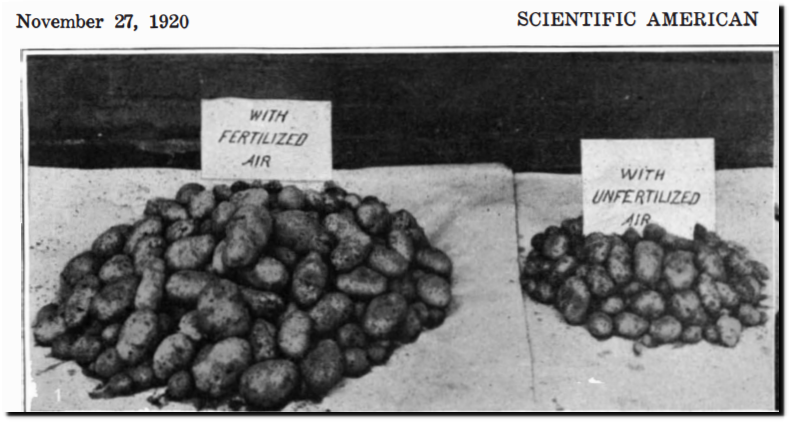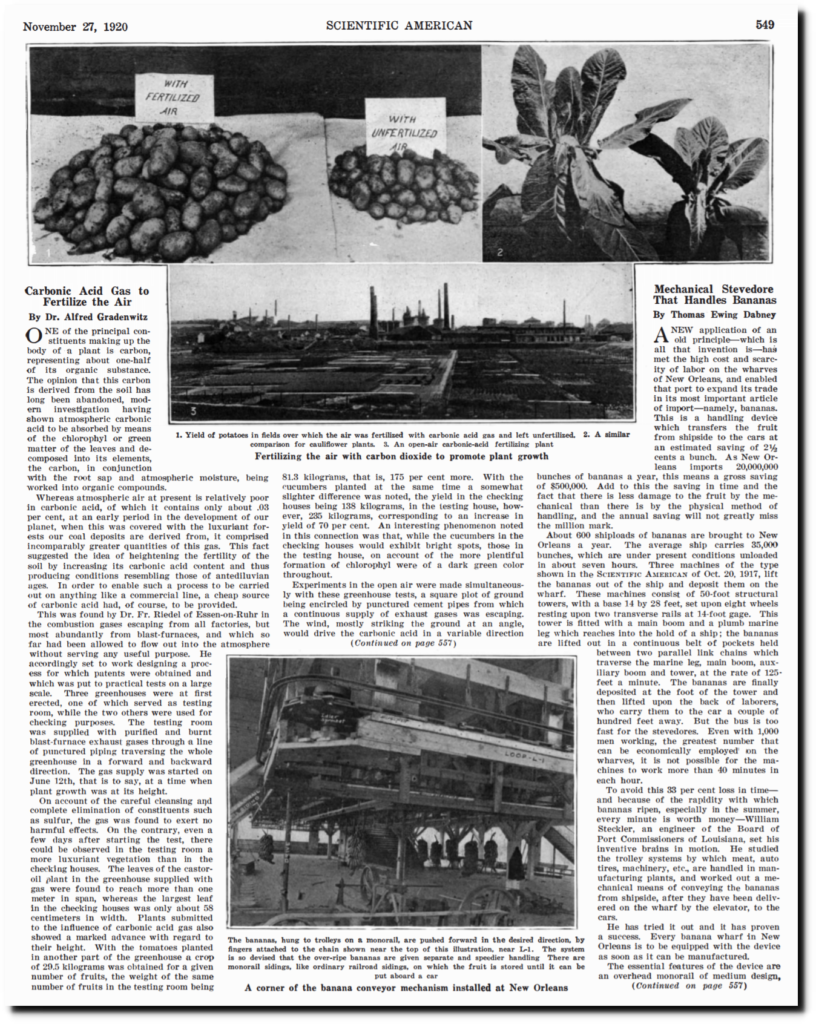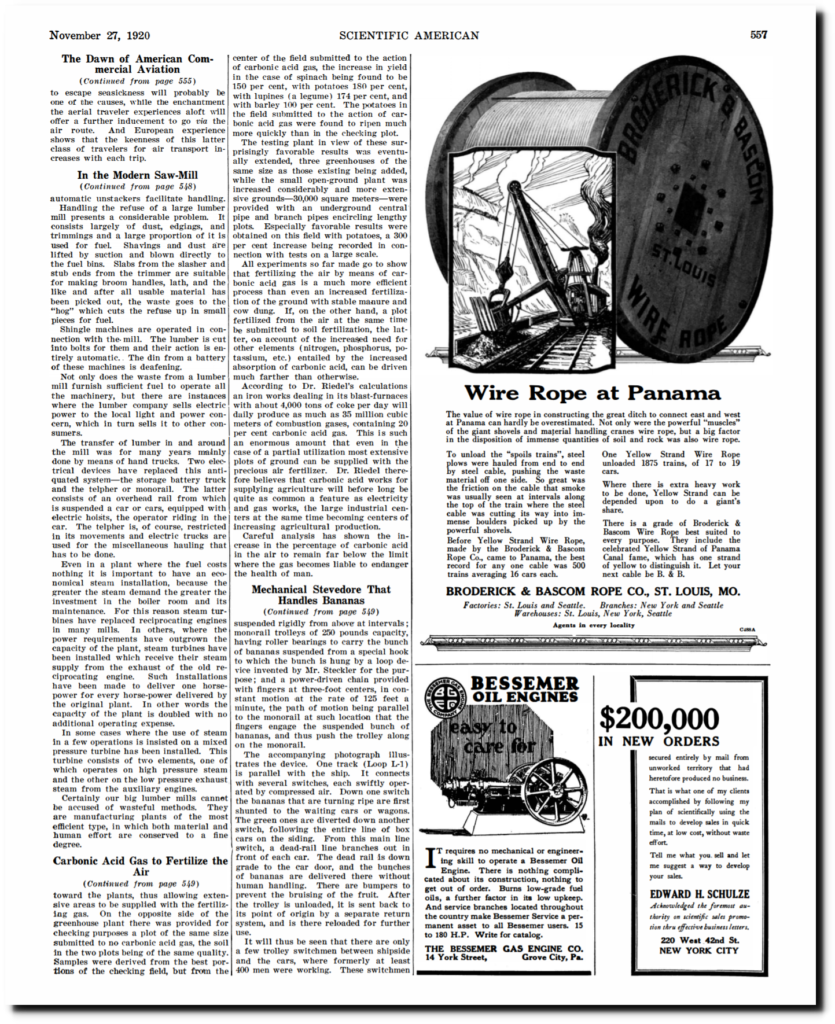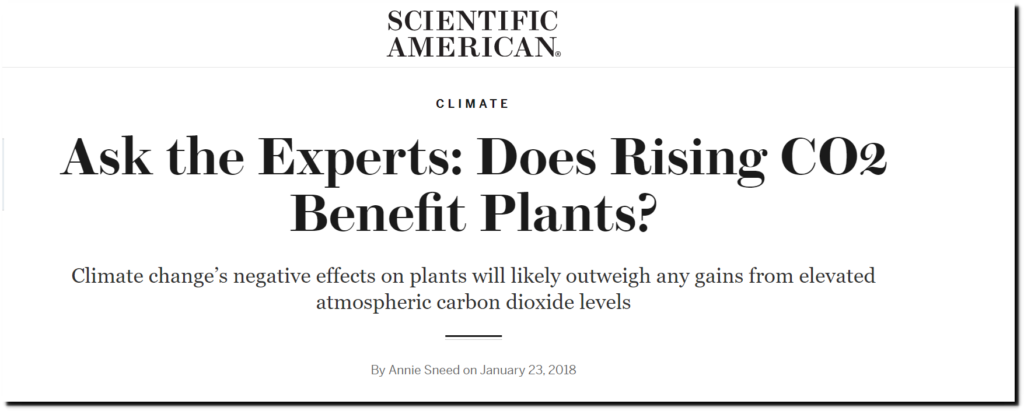In 1920, Scientific American reported that the atmosphere was deficient in CO2, and that crop productivity could be greatly enhanced by introducing CO2 emissions from smokestacks, and that earth was covered with luxuriant forests when CO2 levels were much higher.
“Fertilizing the air with carbon dioxide to promote plant growth
ONE of the principal constituents making up the body of a plant is carbon, representing about one-half of its organic substance. The opinion that this carbon is derived from the soil has long been abandoned, modern investigation having shown atmospheric carbonic acid to be absorbed by means 0’f the chlorophyll 0r green matter of the leaves and decomposed into its elements, the carbon, in conjunction with the root sap and atmospheric m0isture, being worked into organic compounds. Whereas atmospheric air at present is relatively poor in carb0nic acid, of which it contains only about .03 per cent, at an early period in the development of our planet, when this was covered with the luxuriant forests our coal deposits are derived from, it comprised incomparably greater quantities of this gas. This fact suggested the idea of heightening the fertility of the soil by increasing its carbonic acid content and thus producing conditions resembling those of antediluvian ages.”
November 1920 – Scientific American
Now they say –
Climate change’s negative effects on plants will likely outweigh any gains from elevated atmospheric carbon dioxide levels
many skeptics also fail to mention the potentially most harmful outcome of rising atmospheric CO2 on vegetation: climate change itself. Its negative consequences—such as drought and heat stress—would likely overwhelm any direct benefits that rising CO2 might offer plant life.
Ask the Experts: Does Rising CO2 Benefit Plants? – Scientific American
In the 1920 article, they provide tens of millions of years of empirical evidence – luxuriant forests growing at much higher CO2 levels, but now they completely disregard the scientific method, throw all evidence out the window, and make nonsensical speculations based on climate models.





